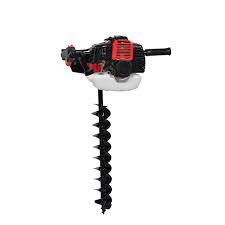auger
英 [ˈɔː.ɡər]
美 [ˈɑː.ɡɚ]
- n. [机] 螺旋钻;[木] 木螺钻;地螺钻
- vt. 用钻子钻洞于
- n. (Auger)人名;(意)奥杰尔;(西)奥赫尔;(法)奥热;(英、德)奥格
星级词汇:

记忆方法
将“auger”想象成一种简单而高效的工具,它像一根细长的“长杆”,用于钻孔或者挖掘。通过这种视觉联想,可以记住“auger”是钻头或钻孔器的意思。
以上内容由AI生成, 仅供参考和借鉴
中文词源
auger 螺旋钻
来自古英语a nauger 错分成an auger. auger, 词源同gar, 矛,见garlic, 大蒜(蒜瓣如矛)。
英语词源
- auger (n.)
- c. 1500, faulty separation of Middle English a nauger, from Old English nafogar "nave drill," from Proto-Germanic *nabo-gaizaz (cognates: Old Norse nafarr, Old Saxon nabuger, Old High German nabuger), a compound whose first element is related to nave (n.2) and whose second is identical to Old English gar "a spear, borer" (see gar). For similar misdivisions, see adder. The same change took place in Dutch (avegaar).
权威例句
- 1. We make a hole in the ice with an auger.
- 我们用螺旋钻在冰上钻洞。
- 2. Already the Snowblast's huge auger blades were engorging snow.
- 扬雪车上庞大的钻头叶片在开始大量吞进积雪.
- 3. He asked in loud auger.
- 他气哼哼地大声嚷着.
- 4. Some fundamental aspects of Auger electron spectroscopy have been reviewed.
- 介绍了俄歇电子谱术的某些基本问题.
- 5. The conclusion presents important references for design and selection of auger drills.
- 研究结果对螺旋钻具的设计和选用具有重要指导意义.
